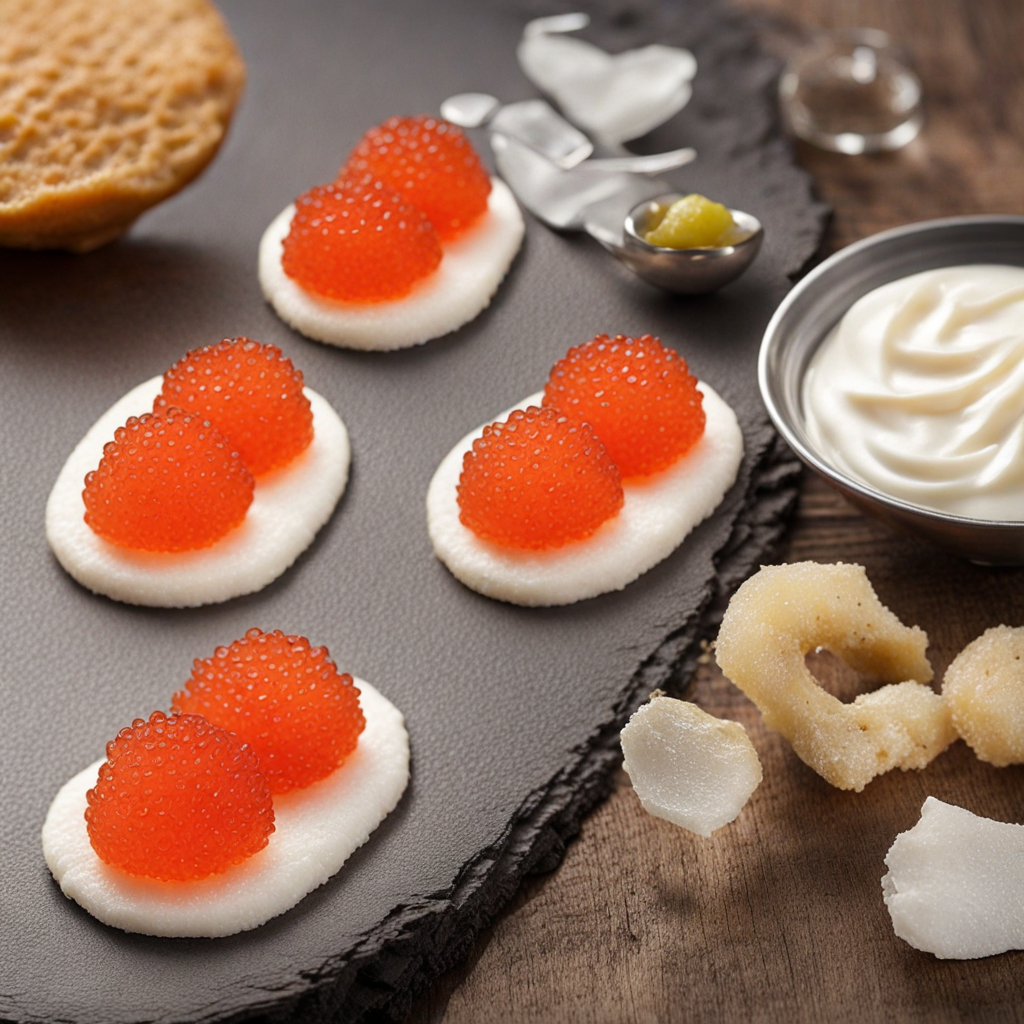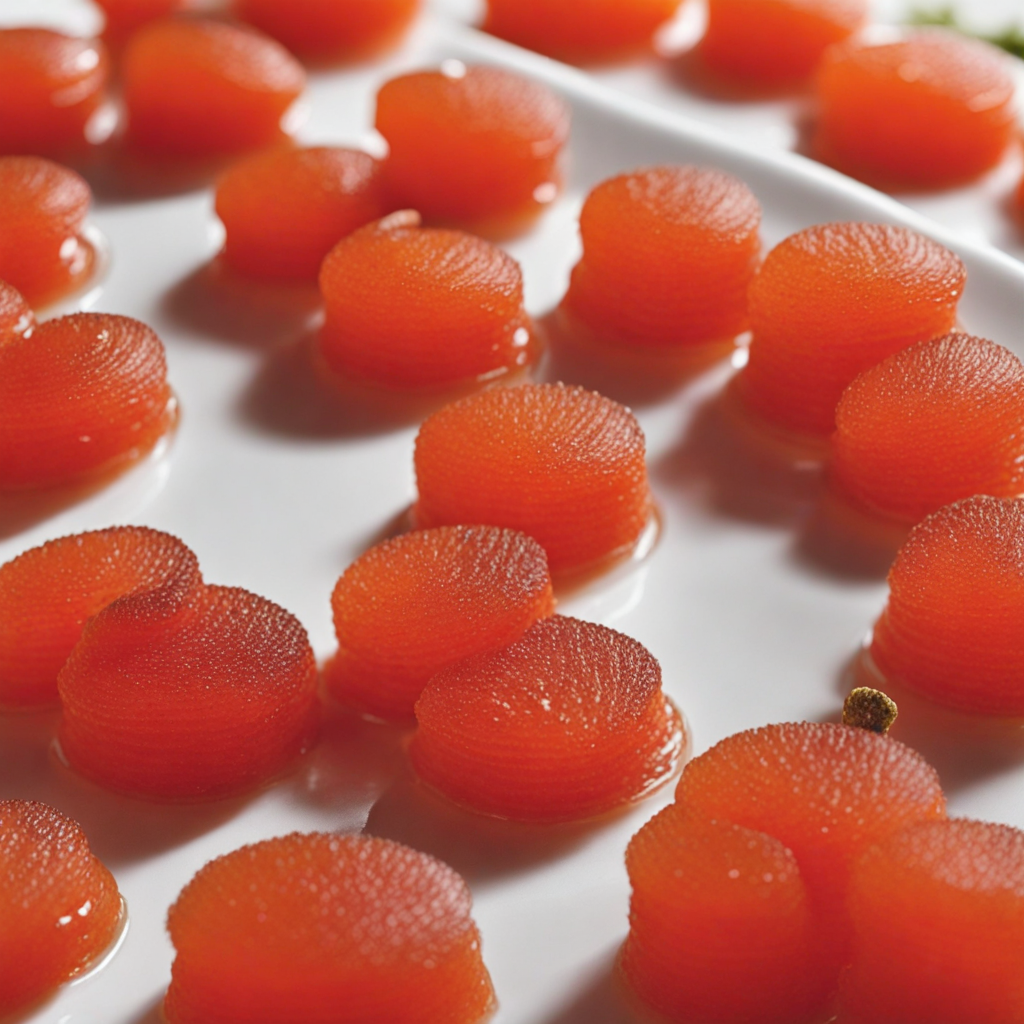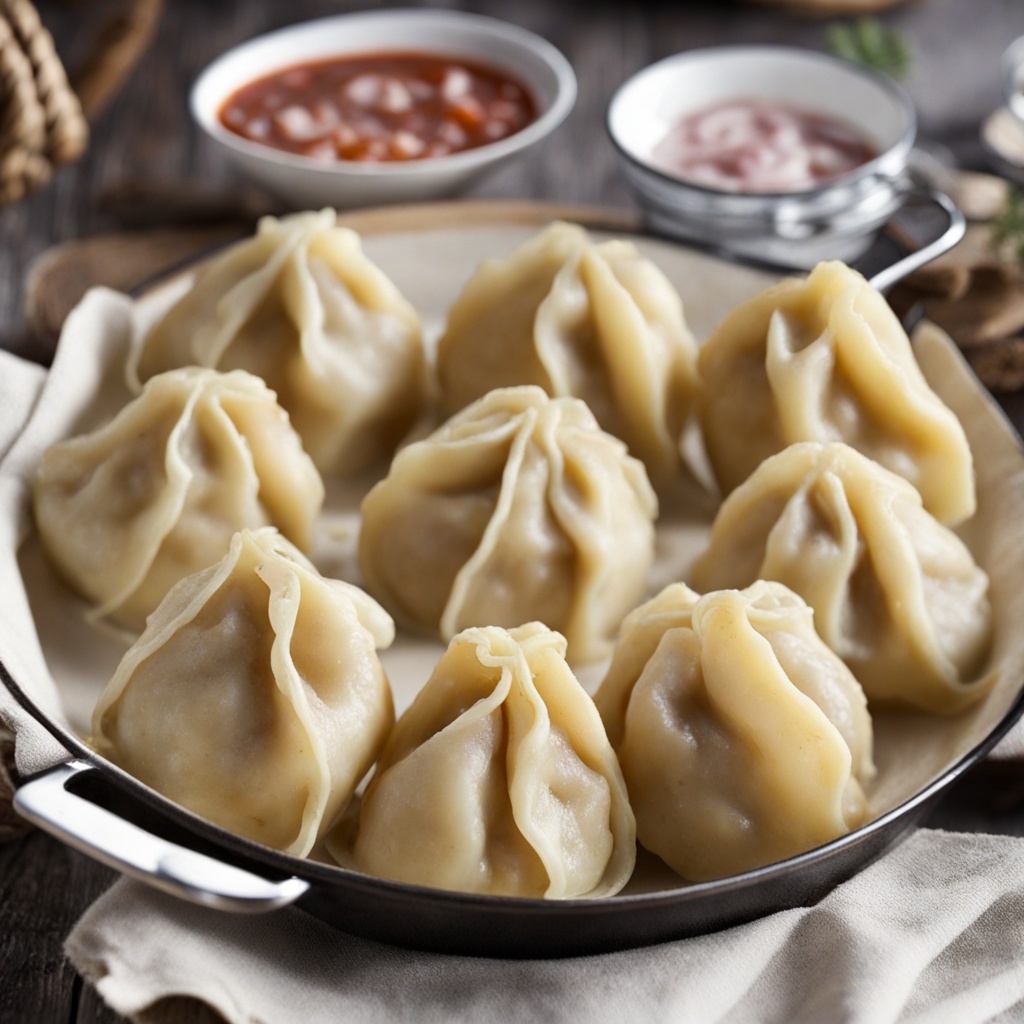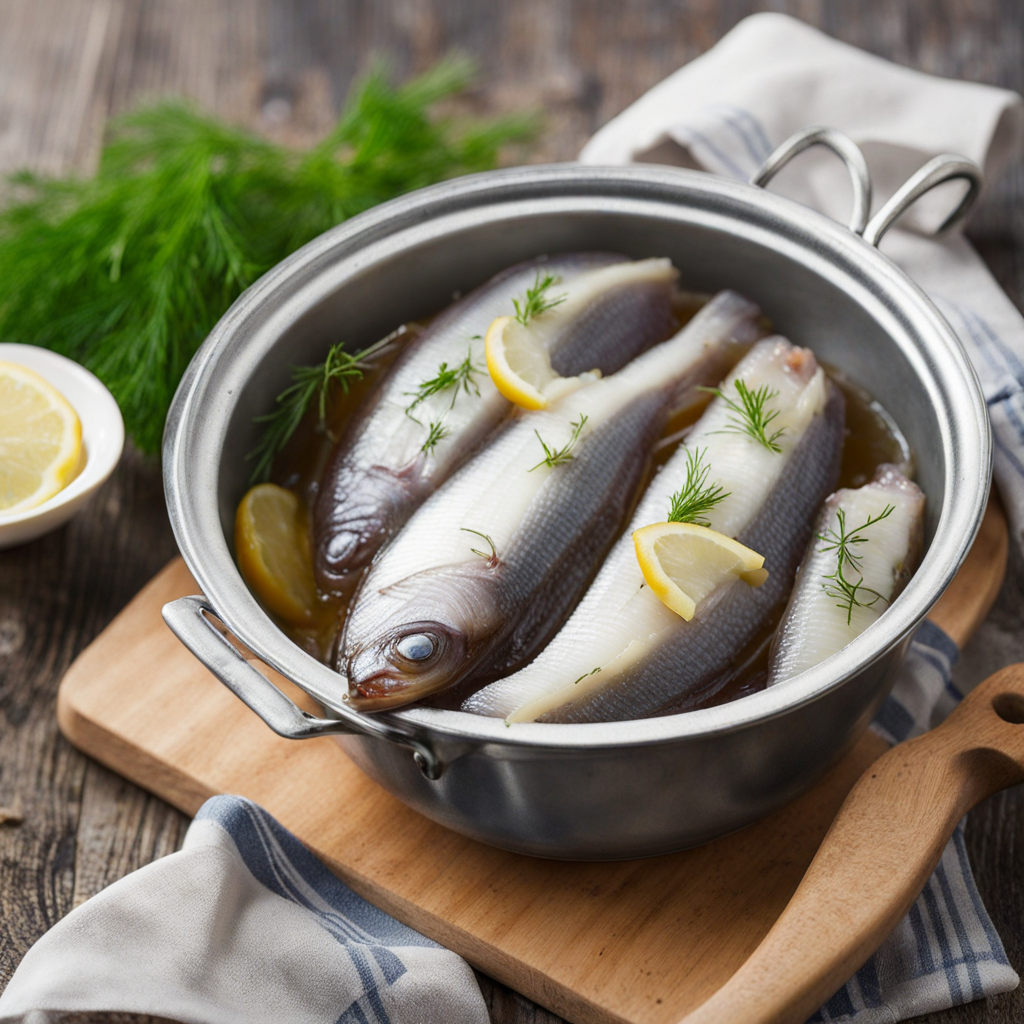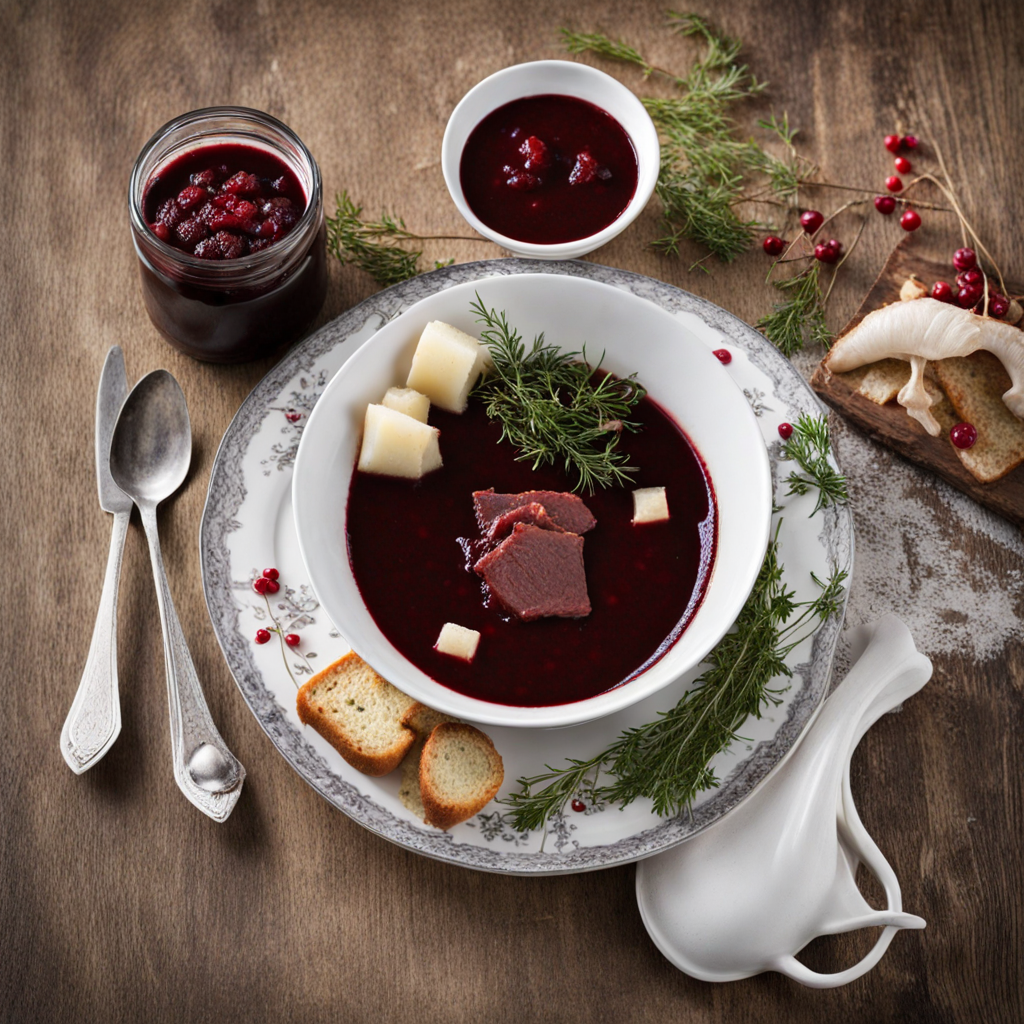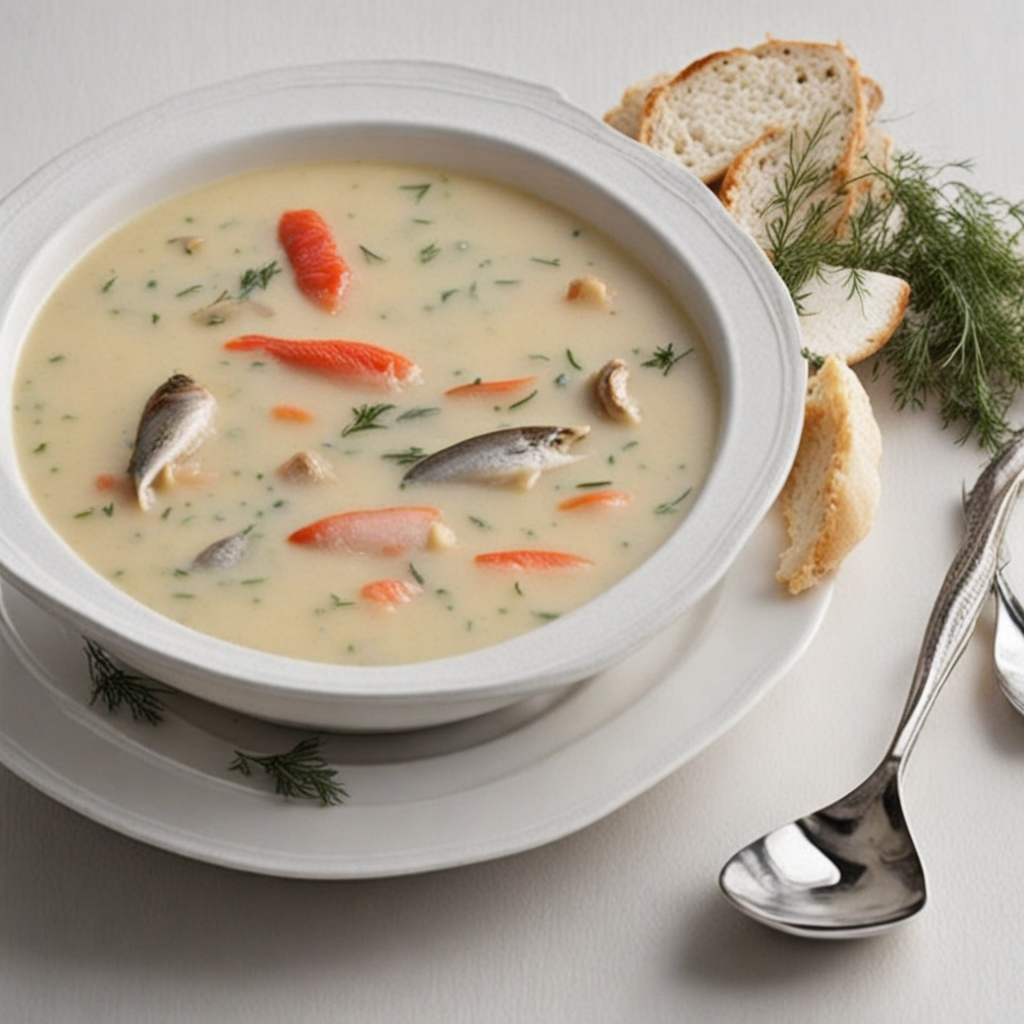Swedish Fish Roe
Swedish Fish Roe, known as "löjrom" in Sweden, is a delicacy that showcases the country's rich aquatic resources, particularly from the northern regions. This vibrant orange-red roe comes from the vendace fish, which is found in the cold, clear waters of Lake Vänern and Lake Storsjö. The roe is harvested during the autumn months when the fish are at their prime, ensuring the freshest and most flavorful experience. The eggs are small, round, and have a glossy appearance, making them not only a treat for the palate but also visually appealing on any dish. The flavor profile of Swedish Fish Roe is both delicate and complex. When you pop one of the eggs in your mouth, it releases a burst of briny, ocean-like salinity, balanced with a subtle sweetness that lingers on the tongue. This unique taste is complemented by its slightly crunchy texture, which adds an exciting contrast to creamy or soft accompaniments. Traditionally, löjrom is enjoyed with blinis or crispbread and often garnished with finely chopped red onion, sour cream, or even a sprinkle of fresh dill, enhancing its flavors while maintaining its integrity. This roe not only serves as a luxurious appetizer but also embodies the essence of Swedish culinary tradition, where simplicity and quality ingredients reign supreme. Whether served at a festive gathering or as part of an elegant dinner, Swedish Fish Roe invites diners to experience the essence of Sweden's natural bounty. With each bite, one can appreciate the cultural significance and artisanal craftsmanship behind this exquisite delicacy, making it a must-try for anyone eager to explore new and unique flavors.
How It Became This Dish
Kalixlöjrom: The Delicate Legacy of Swedish Caviar Kalixlöjrom, a luxurious delicacy from the frigid waters of Sweden, is more than just a gourmet food item; it is a symbol of cultural heritage, craftsmanship, and sustainability. This roe, harvested from the vendace fish (Coregonus albula) in the Kalix River in Norrbotten County, is often referred to as "Swedish caviar," and it has a rich history intertwined with the traditions and lifestyles of the people living in the region. #### Origins The roots of Kalixlöjrom can be traced back to the indigenous Sámi people, who have lived in the northern regions of Scandinavia for thousands of years. The Sámi relied heavily on the natural resources of the land and waters, and fish have always played a crucial role in their diet and culture. The vendace, a small freshwater fish with a delicate flavor, thrived in the cold, clean waters of the Kalix River, making it a favored catch. The harvesting of vendace roe became a seasonal activity that coincided with the fish's spawning period in late autumn. Traditionally, the Sámi would gather at the riverbanks during this time to fish and collect the eggs, which were then prepared and preserved for winter consumption. The method of harvesting and processing the roe was passed down through generations, transforming a simple act of sustenance into an artisanal craft. #### Cultural Significance Kalixlöjrom is not merely a food item; it carries deep cultural significance. In Sweden, it is often associated with celebrations, special occasions, and gourmet dining. The roe is a staple in festive dishes, elevating the dining experience with its briny burst of flavor and striking orange hue. Kalixlöjrom is a symbol of Nordic cuisine, embodying the region's connection to nature and the importance of wild, local ingredients. In 2003, Kalixlöjrom received Protected Designation of Origin (PDO) status from the European Union, which further solidified its standing as a unique product tied to a specific geographical area. PDO status not only protects the quality and authenticity of Kalixlöjrom but also highlights the traditional methods of production that have been preserved over centuries. This designation has helped to maintain the cultural legacy of the roe while promoting sustainable fishing practices. #### Development Over Time The evolution of Kalixlöjrom reflects broader changes in Swedish society and food culture. In the 19th century, as industrialization began to transform Sweden, the traditional methods of harvesting vendace roe faced challenges. Increased fishing pressure and habitat degradation threatened the populations of vendace, prompting concerns among local fishermen and conservationists. In response, the Swedish government implemented regulations to protect vendace stocks and promote sustainable fishing practices. Local fishing cooperatives were established, ensuring that the harvesting of Kalixlöjrom adhered to ecological guidelines while preserving the artisanal methods that defined its production. This balance between tradition and sustainability became a hallmark of Kalixlöjrom's development, ensuring that the delicacy could be enjoyed for generations to come. The late 20th century marked a turning point for Kalixlöjrom as it began to gain recognition beyond Sweden's borders. The rise of Nordic cuisine—characterized by its emphasis on local, seasonal ingredients—sparked interest in traditional Swedish foods, including Kalixlöjrom. Renowned chefs began to incorporate the roe into their dishes, showcasing its versatility and unique flavor profile. It became a sought-after ingredient in fine dining establishments and gourmet markets, both in Sweden and internationally. The popularity of Kalixlöjrom also coincided with a growing global interest in sustainable and ethically sourced food. As consumers became more conscious of the environmental impact of their food choices, Kalixlöjrom’s commitment to sustainable fishing resonated with a new generation of food enthusiasts. The roe became a symbol of responsible gastronomy, celebrated not only for its exquisite taste but also for the care taken in its production. #### Culinary Uses Kalixlöjrom is typically enjoyed as a luxurious topping on various dishes. Traditionally, it is served on crispbread or blinis, often accompanied by sour cream, finely chopped red onions, and fresh dill. This combination highlights the roe's delicate texture and enhances its briny flavor, creating a harmonious balance of tastes. It is also used to elevate seafood dishes, salads, and even pasta, showcasing its versatility in both traditional and contemporary cuisine. In addition to its culinary applications, Kalixlöjrom has also inspired creative culinary experiments. Chefs often pair it with ingredients like pickled vegetables, citrus, or even chocolate, pushing the boundaries of flavor and texture. This innovative spirit reflects the ongoing evolution of Swedish cuisine, where tradition meets modernity in exciting ways. #### Conclusion Kalixlöjrom is more than just a delicacy; it is a testament to the rich cultural tapestry of Sweden and the enduring connection between its people and the natural world. From its origins with the Sámi people to its status as a sought-after gourmet ingredient, Kalixlöjrom embodies a legacy of sustainability, craftsmanship, and culinary excellence. As global interest in Nordic cuisine continues to grow, Kalixlöjrom stands as a shining example of how traditional foods can thrive in the modern culinary landscape, celebrating both heritage and innovation. The roe is not just a taste of Sweden; it is a flavorful journey through time, culture, and the deep respect for nature that defines the Nordic spirit.
You may like
Discover local flavors from Sweden


